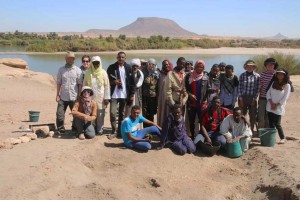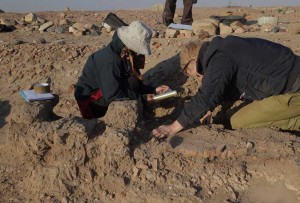Today, fieldwork officially ended in the New Kingdom town of Sai – five very successful weeks came to an end at both SAV1 East and SAV1 West. Other than last year, timing was excellent (no unexpected cellars…): at SAV1 West everything was achieved and at SAV1 East small scale excavation is waiting – exactly as planned – for me and just a small group of workmen next week.
This is therefore the perfect opportunity to thank all of our Sudanese workmen: Like in the last years, the gang, this time directed by Hassan Dawd, did a marvelous job – despite weeks of really cold weather, days of nimiti-fly attacks and stormy periods, they always did their best; all of our excavations results (a summary of the most important finds will soon follow!) depend on their hard work and expertise they gained over the last years. And, of course, the help and friendship of our colleague Huda Magzoub from NCAM are essential for a successful season and much appreciated.
Many many thanks to all team members, Sudanese and international, and looking much forward to the second half of AcrossBorders’ fieldwork – 5 weeks of documentation in the field, small scale excavation, landscape survey and work in the cemetery SAC5!



